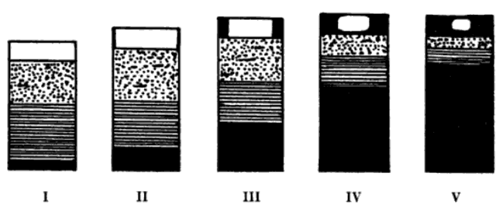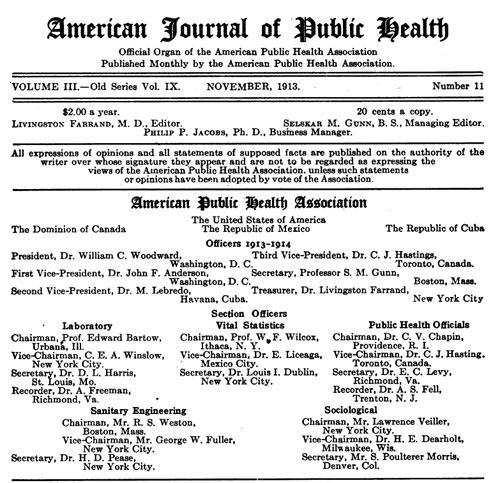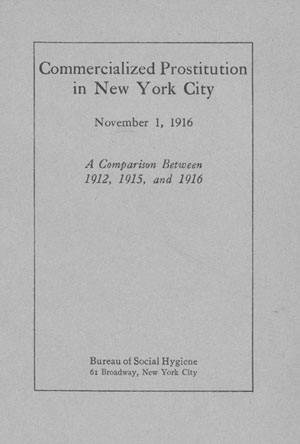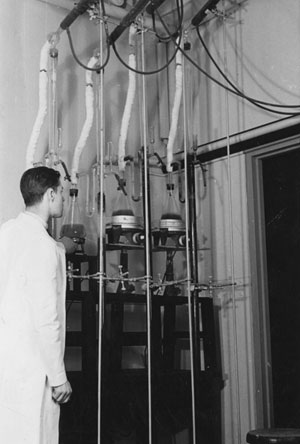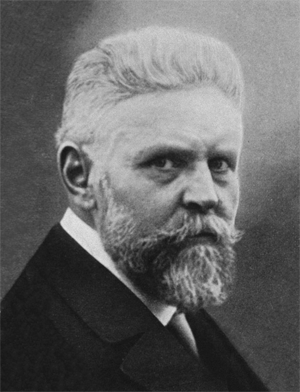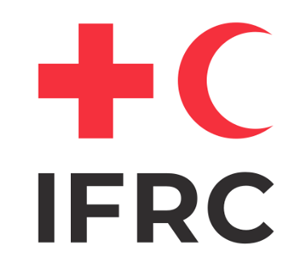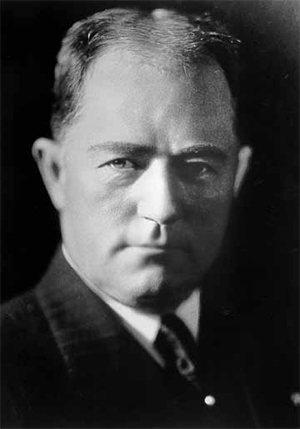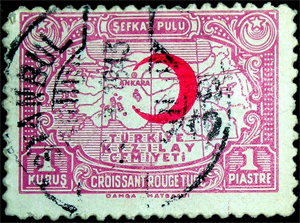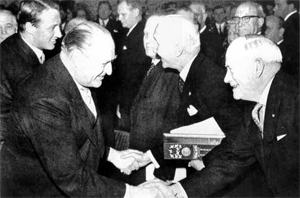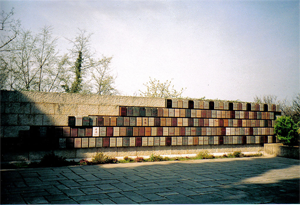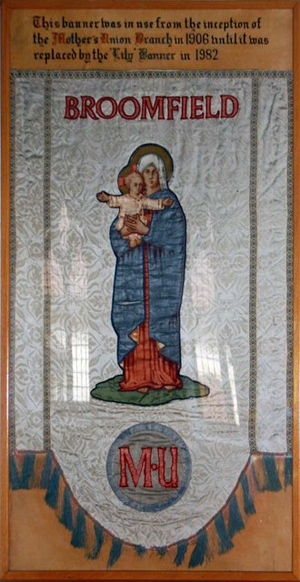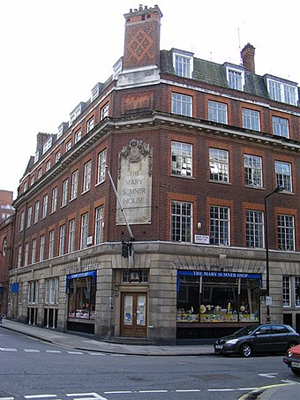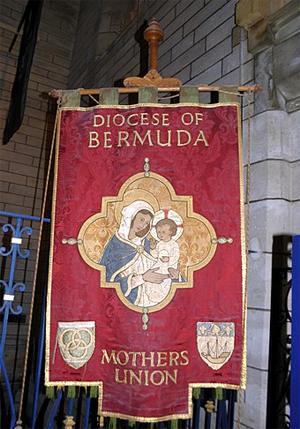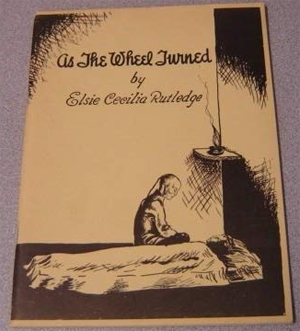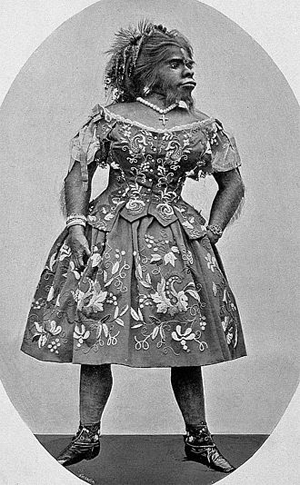Eugenics in the Central Empires since 1914, by Geza von Hoffmann
EUGENICS IN THE CENTRAL EMPIRES SINCE 1914
GEZA VON HOFFMANN
Budapest
Professor Erwin Baur, the famous geneticist and former head of the Biological Institute in Potsdam, said in the second year of the war: "I always thought that the time has not yet come to make eugenics practical. Yet I changed my mind. We lose our best men in the war; the birth-rate falls rapidly; so we must do something." At the same time he accepted the presidency of the Berlin Society for Race-Hygiene.
Formerly German eugenists believed that first our theoretical knowledge must be deepened. Accordingly Germans before the war published excellent books on heredity and allied topics, but made little attempt to popularize these sciences or to put them into practice. During the war the opinion of Professor Baur quoted above dominated all elements concerned. "We must make good our losses!" This was the aim of a movement which soon spread all over the country.
In the minds of average people or of educated men who were not biologists, this meant quantity, nothing but quantity. Of course quality was aimed at, too, but only such quality as could be obtained through education, sanitation, and other social means, not hereditary quality in a biological sense. This movement made no distinction between men and men. Every man, every new-born being, meant a unit which swelled the numbers of the population. It was truly a democratic movement, the supporters of which not seldom refuted eugenic arguments as anti-democratic. Almost all discussion concentrated upon the question of how to make the birth-rate rise, or rather how to assist the family with many children, without regard to the quality of the family stock.
The old science of population which did not yet know the achievements of modern biology, was again taken up, societies were founded for the cultivation of this science, books and articles appeared in great numbers, and congresses were arranged. The largest society founded at that time is the "German Society for the Cultivation of the Sciences of Population" (Deutsche Gesell-schaft fur Bevolkerungspolitik) at Berlin, with a great number of members in all classes of society. It had committees at work in almost all fields of the social problems, always watching that the interests of large families be guarded when new laws or ordinances were issued. Official circles were inclined to accept the opinion of the society. It was in the line of the work of this society, when the Prussian Landtag, later also the German Reichstag, appointed parliamentary committees to study the population problem. These committees published several reports on the question of how to combat venereal diseases, laying much stress upon the foundation of free dispensaries. These were actually established all over the country. The parliamentary committees, however, did not finish their work, as far as I know.
Besides the society just mentioned, many others were founded with rather local significance. In Halle am Salle the Bund fur die Erhaltung und Mehrung der Deutschen Volkskraft worked under the leadership of Prof. Emil Abderhalden, publishing a number of pamphlets and actively assisting families with many children. Similar was the work of the Verein fur Familienwohl in Dusseldorf, and of the Rhein-Mainische Gesellschaft fur Bevolkerungs-politik in Frankfurt am Main, which later became a local of the large national society named above.
Besides this "population" movement we have in Germany the eugenic movement, or, as the Germans call it after the word coined by Wilhelm Schallmayer, race-hygiene. Eugenics and race-hygiene are not quite identical, the second being a broader conception, but the explanation of the theoretical differences would lead us too far. Be it sufficient now to point out one practical difference. The motto of eugenics we may define as "Quality, not quantity." Race-hygiene says: "Quality and quantity."
This may be a reflex to the same stimuli -- losses of the war and the falling birth-rate -- which made the adherents of the population movement demand more and more children. But race-hygiene is well founded also biologically and its students showed clearly that the quality of the progeny in a given society cannot be separated from its quantity. This is not the place to explain this statement and we mention it only in order to make clear the demands of race-hygiene.
The movement is organized in the German Society for Race-Hygiene, Munich, founded in 1905 by Dr. Alfred Ploetz, whose excellent articles in the first and third volume of his Archiv far Rassen- und Gesellschaftsbiologie (G. Teubner, Leipzig, editor) outline the program of race-hygiene.
The International Society for Race-Hygiene, also founded by Dr. Ploetz, did not actually work during the war, although international relations were not entirely disrupted. The German Society, with local societies in Berlin (Prof. E. Baur, Prof. Max Christian); in Munich (Dr. A. Ploetz, Prof. Max von Gruber, Prof. Ernst Rudin, Prof. Fritz Lenz, J. F. Lehmann); in Freiburg, under the leadership of the famous anthropologist Prof. Eugen Fischer, author of the Rehobother Bastards, one of the best books on the question of illegitimacy; and in Stuttgart (Dr. Wilhelm Weinberg) did much to disseminate biological knowledge and to mitigate the one-sided "only-quantity" movement of the populationists. The aim of race-hygiene also is the raising of the birth-rate, but those of the best stocks only. Under the influence of its leading members, the Medical Society of Munich appointed a committee to study this question and published the fruits of nearly two years' work in a monograph which is the standard reference of German practical eugenics.1 [1. The books and most important articles mentioned in this review are enumerated in the bibliography at the end.]
In order to raise the interest in problems of quality, the Berlin Society, together with about twenty of the leading organizations in social work, discussed thoroughly the question of marriage certificates. A special scheme was advocated, which was first put forward in Germany: the exchange of physicians' certificates between prospective partners in marriage should be made obligatory by law, but it should be left to the discretion of the contracting parties to follow the advice of the physician or not. The majority of the experts found even this scheme too far-reaching, accepting only the plan that the idea of consulting a physician before marriage should be popularized. Accordingly leaflets were prepared and distributed in great numbers in several states of the Empire, even through official channels. The Berlin Society for Race-Hygiene published the minutes of the discussion and continued to demand the legal enactment of the exchange of physicians' certificates. As far as I am informed, authorities in Berlin now seem to be inclined to accept the proposition.
The effects of the work of the Society for Race-Hygiene showed itself in most of the actions initiated by different societies or individuals in the interest of future generations. Besides the one-sided "one-quantity movement" and the "quality-and-quantity movement," we find therefore in most cases efforts to obtain "quantity" and a little "quality" too. Biological knowledge was not general enough to follow all the theses of eugenics or race-hygiene, but more or less was accepted. So the congresses held on these topics always discussed race-hygiene too. The semi-official Zentralstelle fur Volkswohlfahrt organized a congress at Berlin in 1915, which was attended by more than a thousand persons, to discuss the question of how to strengthen the population in quantity and quality; the German Society for the Study of the Science of Population organized a similar congress in Darmstadt in 1916; the Ausschuss fur Volksvermehrung, under the leadership of Pastor D. Weber, united a number of chiefly religious societies representing several millions of members and held many conferences; the women's organizations, the teachers, the postal employees, and so on, had all taken up these topics at their annual meetings, and race-hygiene formed always a part of the discussions. In February, 1918, a large congress was arranged in Berlin by the Society to Promote Friendship between the Central Powers (Waffenbruderliche Vereinigung). The population question was fully discussed by the delegates of Germany, Austria, Hungary, and Bulgaria, but the shadow of the great antagonism between conservative and radical thought which later led to the revolution, already disturbed the discussion.
Of course, during the war in Germany a large mass of literature was produced which contained many excellent and original propositions. We mention the plan of Zeiler, who wanted to levy very high taxes on families with few children and to give high benefits to large families. Zeiler worked out his plan in detail. A similar and more ingenious proposition was made by Hugo Froese. These and other plans tried to introduce some precautionary measures in order that the benefits granted might not become simple poor-law assistance, which would only induce the poorest classes of society to propagate at the expense of the tax-bearers, but this eugenical point of view was not always respected.
One of the propositions was actually adopted by the government of Bavaria. All the postal, railway, and telegraph employees of the state annually receive a certain amount for each child, in case at least three children are present in the family. The amount increases from 300 to 900 marks according to the salary of the employee. This is not much, but the difference is still felt, as the family with three children receives three times the amount, whereas to the family with fewer children no such assistance is granted.
Other government employees also receive some children benefit. The principle of assistance to large families is also adopted in the collection of taxes, i.e., bachelors have to pay higher taxes, although the benefits thus granted are very small. More effective were benefits of one mark a day paid to the wives of members of the army in case they nursed their children. This system may have contributed to the very low death-rate among infants during the war.
In Magdeburg a marriage office was opened to facilitate the remarriage of healthy war-widows and the plan was followed in other parts of the empire, also among the German population of Bohemia.
Of purely scientific work, we must mention the researches in family heredity started in Munich, the first work being that of Prof. Ernst Rudin. Dr. Wilhelm Schallmayer published the third edition of his famous Vererbung und Auslese in 1918. This pioneer of German race-hygiene died October 4, 1919. Race-hygiene and allied topics were and are taught in some of the universities, for instance by Prof. Alfred Grotjahn at the University of Berlin, Priv. Doz. Dr. Fritz Lenz at the University of Munich, and Priv. Doz. Dr. Max Christian at the Technical University of Berlin.
Since the end of the war almost nothing has been done in the field of eugenics. There are quite other thoughts now which agitate the minds of the best of the people. The adherents of the populationist movement are silent and negotiations have been taken up to unite the German Society for the Study of the Science of Population and the German Society for Race-Hygiene.
In Austria there never was much interest in eugenics. A certain group of savants, Dr. Rudolph Goldscheid, Prof. Paul Kamerer, and Prof. Julius Tandler, tried to introduce eugenics in Vienna, but they were above all party men, being fervent adherents of Social Democratic teachings. As in Austria and central Europe, almost all leaders of the socialist and communist movements are Jews, it is interesting to note that, as it is said, all members of the society founded by Dr. Goldscheid were Jews except one.
In 1917, the former minister Professor Mataja started a movement in Vienna the aim of which was identical with that of the German populationists, an Austrian Society for the Study of the Science of Population. Whereas in Germany there was a well-established eugenic movement which succeeded in giving to the populationist theories some biological foundation, in Austria there was no such parallel force working. Therefore the adherents of Mataja discussed the problem from the point of view of applied social science and statistics, but did not penetrate the field of biology or heredity. The society arranged a number of interesting lectures and a congress on the sanitary aspects of child welfare.
A congress was arranged at Vienna in 1916 by the Deutech-osterreichische Zentralstelle fur Volkswohlfakrt, which discussed the population problem. Political agitation troubled even these meetings, as the radicals attacked the speakers who did not follow their teachings, including Prof. Johann Ude, of Graz, who is the champion of race regeneration in Austria on purely Catholic lines. His Volksheilzentrale does much to popularize sanitary and other measures in the population.
In Bohemia researches were made in heredity in the Ernestinum in Prague, following the methods of Dr. H. H. Goddard, of America, and at the end of the war a Czech Society for Eugenics was founded.
The Hungarian people have always shown keen interest in measures which aimed at race regeneration or similar ends. Eugenics were early discussed in Hungary and at first the teachings of English and American eugenists were followed. Later the German conception of race-hygiene was accepted, and in 1914 a commission was appointed to organize the movement. From the beginning the government has shown an active interest in the work and was represented on the commission. The outbreak of the war delayed preparations and it was only in 1917 that the Hungarian Society for Race-Hygiene and for the Study of the Science of Population was founded. The presidency was accepted by Count Paul Teleki, later minister of foreign affairs and prime minister, and leading men of science and public life were prominent in the movement.
As the name of the society indicates, the double movement which divided the efforts of race regeneration in Germany was united in Hungary from the beginning. Students of social science and of biology worked together in the greatest harmony. As biological knowledge in the population was and is still very scarce, the popularization of information on heredity was the first task. Lectures were held, courses and public discussions on eugenics arranged, pamphlets issued in great numbers. Still deficiency in knowledge was the greatest impediment to the introduction of practical measures, as men having the best will to do something could not always find the right solution when the time came for action.
Hungary was the first country on the European continent which accepted eugenics as a government measure. Count Teleki, when in 1917 appointed head of the Welfare Office for War Sufferers, declared his intention of introducing practical eugenics. I was called from Berlin and had the honor of directing the necessary work. We thought the group of war sufferers mostly excellent stock from an hereditary point of view, best adapted for the first trial measures, which could later be extended to the population as a whole. Here also the chief aim was at the beginning to spread sound eugenical ideas. Lectures were held in all institutions where the mutilated and other victims of the war were treated or taught, pictures were posted everywhere, and leaflets distributed in great numbers. The army commandants also distributed these leaflets to the soldiers.
Later we tried some practical measures. The most important was the distribution of land to the mutilated in such a way that the best men in the hereditary sense of the word received land enough to support a family and that the stipulations of the contract encouraged the rearing of children.
Then we tried to direct the returning soldiers of good stock out of the large and overcrowded cities to the country, the latter being better adapted to a healthy family life. If we had two positions to fill, e.g., that of a janitor who probably could not rear more than two or three children, or would rather stay single, and that of a manager on a country farm, then we sent a man whose propagation seemed not advisable to fill the janitor's post, and sent the healthy and otherwise desirable man to the farm. Respective advices were given as to the duty of the healthy to rear many children and that of the defective to terminate his bad stock in his own interest. Of course, such steps were taken only after thorough investigation and medical examination.
Much interest was shown by the men as to the advisability of their marriage and propagation. Efforts were made to convince the sick and the mutilated that their defects were not hereditary, and we were pleased to see how the advice given enlightened these poor victims of the war. All local authorities and the different government offices were asked to assist these efforts of race regeneration, to spread sound eugenical ideas among the population, and to act accordingly when fulfilling their official duties.
Acquaintances were facilitated between men and women who wanted to marry and had no suitable partner. A questionary was filled out, and, accompanied by a picture of the person but without his name, it was shown to persons of the other sex, who applied for such information in the notary offices or in the state institutions where the wounded were treated, and soldiers taught. In case the wish was expressed to meet, the acquaintance was made possible and the outcome was left to the persons concerned. Precautionary measures were taken to exclude fraud.
To persons wishing to marry, medical advice was given. After some propaganda, this work was to be thoroughly organized, and later the exchange of medical certificates according to the German plan already mentioned in this article, was to be established by law. The medical offices to be used for this purpose were already selected in different clinics and other public institutions. In one of them even the animals needed for blood examinations were bought. The medical rules to be followed by the examiners were worked out in detail by the most competent physicians. Then the revolution broke out in October, 1919, and brought everything to a sudden end. The leading officials of the institutions had to leave their posts and to give them over to uneducated young men. The pictures and leaflets which before the revolution were used to spread eugenical ideas were destroyed. Later, during the period of communism, the remaining numbers of the eugenic periodical Nemzetvedelem were burned as immoral literature, and the eugenic movement was called one of the most dangerous and reactionary things existing. As one of the chief aims of Bolshevism in Hungary was to exterminate the upper-class families and to establish proletarian rule, the anger of the communists against eugenics can be understood.
Of other government measures, we may mention first of all the assistance given to public officials and state employees after the birth of their children. Hungary was the first country to give this assistance. All public officials and state employees received, according to a law of 1912, 200 kronen annually for each child. Since that time the amount given was several times raised; since 1918 the assistance amounts to 800 kronen for each child.2 [2. In the summer of 1920, the government promised to double these benefits.] I do not believe that any other country pays as much for family assistance, although the payment is far from being enough to cover all expenses of the rearing of children. The fact that the amount is the same in all grades and does not vary with income, is in a certain way contra-selective, as it means for the lowest paid grades of officials the proportionately highest benefit and induces them therefore to propagate more than it does the higher grades. On the whole the system is of eugenical significance, as the men forming the staff of government officials in Hungary are a selected body.
In a similar way the number of children is taken into consideration when state employees are permitted to purchase food, clothing, and merchandise at lower prices, a relief work which has been carried on since the latter part of the war.
In 1917 the income tax law was amended in such a way that persons with no children have to pay 15 per cent more, and persons with only one child 10 per cent more taxes than others.
Besides the purely eugenic movement there is a movement to fight venereal diseases, organized in the "Union to Protect the Nation" (Nemzetvedelmi Szovetseg] which arranged a congress in 1916 lasting over a month. The first authorities of the country gave lectures which later were published and presented to the government. The general thought was that to combat these diseases effectively, the whole field of race regeneration must be taken up. A similar congress was arranged in 1917 to discuss the problems of social hygiene3 [3. Social hygiene includes in Europe all measures in the interest of the health of the people, and not only the fight against venereal diseases, as in America.] and it was demanded that in order to make the movement effective, a special Ministry of Public Health and Social Welfare should be created. Steps were taken in this direction, but the plan was realized only after the revolution, although the preparations had not yet been made.
Since Bolshevism was broken in August, 1920, the whole country needs "race regeneration," not so much in the sense of eugenics, but sound morals, order and law, healthy family life, and regard for future generations. Everybody's whole time and energy is devoted to the reorganization of the country and to avert the consequences of a so-called peace. Later, when conditions change, the time will come to continue the work of eugenics.
BIBLIOGRAPHY
SCHALLMAYER, WILHELM: Vererbung und Auslese. Jena: G. Fischer, Third edition, 1918.
The standard work of German race-hygiene which should be read by every student of eugenics.
ARCHIV FUR RASSEN- UND GESELLSCHAFTSBIOLOGIE. Leipzig: G. Teubner. (Periodical) The best review of eugenics in German.
POLITISCH-ANTHROPOLOGISCHE MONATSSCHRIFT. Berlin: Steglitz. (Periodical)
An interesting review of that branch of the movement which demands pure race and high breed, combating racial intermixture.
ERHALTUNG UND MEHRUNG DER VOLKSKRAFT. Munich: J. F. Lehmann, 1917.
This first-class book contains the fruit of nearly two years' work of the Medical Society of Munich.
RUDIN, ERNST: Studien uber Vererbung und Entatehung Geistiger Sttirungen. Berlin, 1916.
An excellent study in heredity. The reader will see how conservative, thorough, and exact are the German methods in solving these problems.
SCHALLMAYER, WILHELM: Einfuhrung in die Rassenhygiene. Vol. II., Der Ergebnisse der Hygiene. Berlin: W. Weichardt, 1917.
One of the founders of German race hygiene gives here a synopsis of the question.
SIEMENS, H. W.: Die Biologischen Grundlagen der Rassenhygiene und der Bevolkerungs-politik. Munich: J. F. Lehmann, 1917.
An excellent introduction to and short survey of race-hygiene.
ZEILER, A.: Gesetzliche Zulagen fur jeden Haushalt, Stuttgart, 1917.
One of the most discussed plans to raise the birth-rate.
Die Erhaltung und Mehrung der deutschen Volkskraft. No. 12, Der Schnften der Zentral-stellefurVolkswohlfahrt. (New series) Berlin: C. Heymann, 1916.
Contains the lectures and discussion of the congress of 1915.
Uber den gesetzlichen Austausch von Gesundheitszeugnissen vor der Eheschliessung und Rassenhygienische Eheverbote. Munich: J. F. Lehmann, 1917.
Contains the interesting discussions of the representatives of about twenty leading societies on the question of marriage certificates.
CHRISTIAN, MAX: Die wirtschaftliche Begilnstigung des Kinderreichtums. Archiv fur Raasen- und Gesellschoftsbiologie, Vol. XI., No. 6, August, 1916.
The author gives a practical scheme for the solution of the problem.
FASSBENDER, M.: Des deutschen Volkes Wille zum Leben. Freiburg im Baden: 1917.
The "population question" from the catholic point of view.
VON HOFFMANN, G.: Krieg und Rassenhygiene. Munich: J. F. Lehmann, 1916.
A short survey of race-hygiene in Germany and its demands.
Das neue Deutschland, Symposium on Krieg und Volksvermehrung. Berlin, 1916.
A number of first-class authors give their view on the population question.
LENZ, FRITZ; Uberblick uber die Rassenhygiene Jahreskurse fur arztliche Fortbildung, Munich: J. R Lehmann, October, 1917.
Dr. Lenz, one of the best students of eugenics, shows in this excellent and original study what the physician has to know about eugenics and heredity.
NEISSEB, ADOLF: Die Geschlechtskrankheiten und ihre Bekampfung. Berlin, 1916.
This book gives the actual program of the German movement to combat venereal diseases and explains the problem.
PAULL, H.: Die neue Familie. No. 70, Der deutsche Krieg. Stuttgart: von Jaeckh, 1916.
Dr. Paul, who founded the Bund fur deutsche Familie und Volkskraft in Karlsruhe, explains the problem of race regeneration and proposes practical measures. He is one of the leaders of that branch of the movement which lays much stress upon the moral side of the question.
Kunstliche Fehlgeburt und kunstliche Unfruchtbarkeit, ihre Indikationen, Technik und Rechtslage. Leipzig: G. Thieme, 1918.
An exhaustive handbook on sterilization and abortion for physicians and students of eugenics. The book is written by a number of leading authorities. The American laws on sterilization are treated in detail.
Nemzetvedelem (Protection of the Race). Hungarian review of eugenics. Budapest, since 1918.
Minutes of the Congress on Venereal Diseases, Budapest, 1916. Published by the Nemzetvedelmi Szovetseg, Budapest.
Society Becoming Self-Conscious, by Benjamin C. Gruenberg
SOCIETY BECOMING SELF-CONSCIOUS
BENJAMIN C. GRUENBERG, PH. D.
Assistant Educational Director, United States Public Health Service
In the autumn before the outbreak of the European war, the British National Birth-Rate Commission began its investigations; and in June of 1916 it completed its report. This report was described by Sidney Webb as "the most candid, the most outspoken and the most important statement that this country has yet had, as to the extent, nature and the ethical character of the voluntary regulation of the married state which now prevails over the greater part of the civilized world."
But the Commission did not consider the task assigned to it as by any means completed, and recommended the continuation of its investigations. The Commission was reconstituted under the presidency of the Lord Bishop of Birmingham and the directorship of Dr. C. W. Saleeby in 1918, with about forty members. The second report,1 [1. Problems of Population and Parenthood. New York: E. P. Dutton & Co., 1920. 423 p.] that of the reconstituted Commission, is before us. Under the resolutions establishing the Commission, its task was to inquire into:
1. The fall of the general birth-rate with the increase in the illegitimate birth-rate.
2. The causes of infant deaths and of stillbirths.
3. The movements of population and the ratio of the sexes in the Empire.
4. Economic problems of parenthood and their possible solution.
5. The relation of the housing problem to parenthood.
6. The spread of venereal diseases, their relation to sterility, degeneracy, and their probable increase during demobilization.
7. The increased industrial employment of women of child-bearing age.
8. The differential or qualitative aspects of the present birthrate.
9. The relation of the new Ministry of Health to racial reconstruction.
10. The need for a census immediately after the war and for an anthropometric department under the Ministry of Health.
The volume consists of a brief historical introduction, lists of members and of witnesses, and an outline table of contents (pages v to xxix); the report, prepared in five sections (pages xxi to clxi); notes of reservation from the majority opinion on the voluntary restriction of birth, on marriage certificates, on venereal diseases, on divorce, and on alcohol, signed by minority groups, varying in size from one to twelve of the commissioners (pages clxii to clxvi); and Part II, minutes of the evidence of forty-six witnesses (pages 1 to 423).
The statistical study of birth-rates is confined to supplementing the findings in the first report with the figures for more recent years (1913-1918), which show a steady continuance in the decline of the birth-rate, with a steady advance in the percentage of illegitimate births. The decline of births during the war was, however, accompanied by a marked decline in the infant death-rate. This was a continuation of the tendency already observed for several years before the war, and was due, in part, to an increase and improvement of child-welfare work by the local authorities, the probable increase of breast-feeding as well as of the use of dry and condensed milks (because of the high price of "fresh" cow's milk) and the decline of the birth-rate itself.
More important than the decline of the birth-rate, in the estimation of the Commission, is the fact that the birth-rate has been declining in such a way as to be more pronounced among the classes "which have demonstrated superior capacity for the struggle of life in the past by rising in the social scale." Mr. Sidney Webb, however, while agreeing with the Commission in considering the reckless multiplication of the irresponsible and least valuable members of the community in every class an alarming fact, points out that the portion of the community (about 150,000 families) having an income of over one thousand pounds a year is statistically insignificant, although absorbing economically a quarter of the national income. Although no consideration seems to have been given to the question of differential survival of the "superior classes," the Commission recommends a permanent anthropometric department under the Ministry of Health and the establishment of a general register, and urges the making of a census in various parts of the Empire simultaneously in order to make possible comparisons throughout. It urges especially an inquiry on the relation of religion to the birth-rate.
The most important factor in the decline of the birth-rate is the voluntary restriction which is taking place on a large and increasing scale and with an incidence that is far from eugenic, no matter what one's theories of the social and economic distribution of human qualities may be. And the most important factor in the determination of voluntary restriction is economic. The Commission, as a whole, was apparently working on the assumption that an increase is per se desirable and that somehow a large population is of value to the "Empire" as distinct from the people who make up the Empire. Although the voluntary control of births began with the educated and professional classes for reasons described by some of the witnesses as "selfish," it has steadily spread to other parts of the population because of the strain and anxiety incident to childbearing, nursing, and rearing, and because of the costs of education and the desire to provide for the future of girls -- in short, because potential parents demand more from life for themselves, and actual parents demand more from it for their children.
There is general agreement in the Commission (1) that abortion is ethically indefensible, except under medical direction with a view to removing serious risk to the mother; (2) that persons who are likely to transmit any serious physical or mental taint should not have children; (3) that no means of preventing conception can be tolerated that may injure the health of potential parents or of children; (4) that no person should refuse the duties of parenthood for purely selfish reasons; (5) that while parents cannot be relieved of their responsibility, it is, nevertheless, the duty of society to remove disabilities that may be imposed on worthy parents without any fault of theirs; and (6) that instruction should be given especially to young persons in the laws of sex hygiene, the prevalence and dangers of venereal disease, the right and healthy use of the state of marriage, the immorality of inducing abortion with criminal intent at any period of pregnancy, the duties, responsibilities, and privileges of parenthood, the importance of healthy offspring, and the value of family life to the nation and the human race.
The Commission further agrees that no moral issue is raised in regard to the limitation of the family when there is good reason for such a course; but moral issues are raised by the means used for the purpose. The Commission then presents six "arguments for the use of contraceptives" and six "arguments against the use of contraceptives." But twelve members of the Commission signed a note of reservation disapproving the former and approving the latter; and of the twelve dissenters, seven are theologians.
The proposed remedies range all the way from the neo-Malthusian recommendations of the universal practice of birth control for the elimination of poverty, as a solution of the population problem, to the inculcation of various kinds of "holiness" as a panacea for all problems. Thus the president of the Mother's Union, who presented some very interesting summaries of investigations into the reasons for voluntary restriction of families, on being asked by Rider Haggard whether she could imagine people in crowded rooms and with no comforts understanding the "dignity and holiness of parenthood and of the duty to the country in the passing on of life," replied: "That is all the more reason why they should be taught." In short, the emptiness and hardships of life are to be replaced by magic words. There is considerable material on various schemes for the endowment of motherhood, on the causes of illegitimacy, the need for legislation on the protection of children, and on the relation between the industrialization of the female population to the problems of childbirth and child nurture.
The chapter on "The Causes of the Loss of Infants both Before and After Birth" is perhaps the most important constructive portion of the report, since it deals with the human elements and the concrete factors through which their welfare may be controlled, although many of the members of the Commission did not apparently see the far-reaching implications of their demands for suitable milk supply, adequate housing, and leisure, comfort, and peace of mind for the mother before and after childbirth.
The role of the venereal diseases in causing loss of population leads to an exhaustive discussion of the ethics of prophylactic packets as against stations for the early treatment of infections; of compulsory treatment; of the problem of prostitution; of confidential death certificates; and of marriage laws with respect to venereal diseases.
The relation of alcoholism to the birth-rate elicits the endorsement of Lord D'Abernon's program for regulating drink, which consists of the discouragement of the use of beverages of excessive alcoholic strength; the avoidance of drinking alcohol on an empty stomach, and the avoidance of continuous or frequently repeated drinking of alcoholic beverages. But Dr. R. J. Drummond, representing the Morals Committee of the United Free Church of Scotland, makes the reservation that nothing short of absolute prohibition would meet the needs of the case.
On marriage and divorce, there is a greater variety of opinion, but the Commission agrees that there is need for reform in the marriage laws in its discrimination against women; that the distinction between the religious rite and the legal contract of marriage should be recognized; but that the legal contract should be considered a moral obligation on the part of all citizens who live together as husbands and wives, whatever their views on the religious rite; that the courts should give special consideration to the interest of children in cases of divorce; and that subsequent marriage of parents should make their children legitimate.
At every point the problems considered by the Commission and the suggestions and facts presented by the witnesses lead to fundamental biological and economic factors. Social hygiene as a body of thought may perhaps carry on in total disregard of the surrounding conditions; but the health of society is impossible when the mass of people lives in ignorance, privation, and squalor. The theorizing of the experts, the exhortation of the moralists, and the orations of statesmen will remain the ineffective manifestations of the fact that these good people are agitated; they will not increase birth-rates, diminish morbidity or mortality, nor do anything to lessen the misery and anguish of those who suffer, so long as the concern remains with empire or nation or trade balance rather than with the kind of organisms that make up nations and empires.
The contradiction between the ostensible advancement of the national welfare through elimination of child labor and through the prolongation of the period of compulsory education on the one hand, and the actual fact that all these requirements oppress the mass of workers most mercilessly during the transient period, on the other, is but one aspect of the habitual failure of statesmanship based upon a quantitative theory of society to face what is really important in human affairs.
Our civilization is based upon attitudes and traditions which assume legitimacy of exploiting people by those who can for private purposes. This acceptance of "prostitution" as a prominent principle of human dealing pervades all of our relationships. A study of this report leaves one with the conviction that we cannot eliminate one special phase of prostitution or one side of the consequences unless we are willing to throw the whole scheme of exploitation overboard.
The Sins of Industry against the Race, by Herman Lundborg
THE SINS OF INDUSTRY AGAINST THE RACE
HERMAN LUNDBORG
Docent, University of Upsala, Sweden
It is a melancholy fact that there has been a bitter race between certain civilized peoples of our times in the production and selling of all sorts of manufactures, useful and necessary things as well as articles of luxury, in enormous quantities. Rivalry for the markets of the world has then sprung up, and had to spring up some time or other, between the principal trading nations. This has perhaps been the deepest-lying cause of the great war. It surely was no chance happening that Germany and England, the two foremost trading empires of Europe, got to fighting a struggle for life or death.
Industry has in the course of decades made these and other countries richer by milliards. Universal prosperity has increased enormously, very considerable improvements of environment have been brought about, and nevertheless, our modern civilization is at present practically in ruins. Thus these riches have been of no use to us, but have instead brought with them great harm. From many parts of England, and from other places, there is shown by reports that industry is the greatest devitalizer of races and peoples. An English military medical report, in which an account is given of the physical examinations during the war of 2,500,000 of young Englishmen from all parts of the country, states that only 36 per cent were unreservedly fit for military service. More than 10 per cent were so deficient that they had to be considered unfit for every sort of work, military as well as civil, and on this account, became parasites upon society.
The Galton Laboratory in London has published very comprehensive statistics concerning the number of children per couple in different social strata of England: within the intellectual population, on an average, 1.6; among the poorly endowed 6.6; and among criminals 7. Thus the socially deficient give birth without any sense of responsibility to masses of children, who show not only a high death-rate, but also deficiency like their parents. It will be the lot of the fitter to take care of these children that have been forced upon them by people who, as a rule, do not trouble themselves about their own offspring. Our civilization cannot stand higher, as long as such things are allowed to take place unchallenged almost anywhere in the world. Those are indeed sad figures. It is easy to understand that great anxiety is prevailing in England on account of the signs of general debility and degeneration, which are at present beginning to be conspicuous.
As a rule people have no clear conception of how dangerous the effects of industry are upon individuals and society. This is a very complicated subject, but let us critically examine these questions from a race-biological point of view, and not content ourselves with merely pointing out its most obvious mischief in regard to the surroundings. Sociologists and also physicians, as a rule, look at these things too superficially. They generally reason as follows: The riches which pour into the country, thanks to an ever-developing industry, are welcome and advantageous to us. Consequently, laissez faire! At the same time we must, it is true, work for good surroundings and improved universal hygiene, in order to hold our own with the injuries. Such reasoning is false, for many of the perils that go under the name of industrialism are not to be removed so easily.
To begin with, one might seriously discuss the question, whether wealth pouring into a country really is of use to a people. One has a right to doubt this, for experience shows that rapidly increased prosperity, in olden times as well as in ours, breeds an infinitude of needs, the desire for luxury increases, effeminacy begins to show, love for work decreases, and so on. Luxurious living calls forth too much love for ease, for which the children will soon enough have to suffer. The women begin more and more commonly to shun maternity, and all round about us we witness how the 0-1-2-children system flourishes, beginning within the wealthier classes of society. Gradually this process goes deeper and removes by and by every trace of peoples before vigorous. This is what is called race suicide.
We inhabitants of the north ought not to look for our ideals, for instance, to France, which is agriculturally one of the most fertile countries of Europe; but where, however, the people nowadays have neither the desire nor the strength to bear and bring up a sufficient number of children. Instead, the French people are slowly wasting away, and are dying out or mingling with other, perhaps inferior races, such as Africans and the like.
The Swedish people has until of late lived in poverty, but children have never been lacking in the Swedish homes. Most of these have had to fight their way in the world. Nevertheless, as a people, the Swedes have generally up to the present day been conceded to rank among the most superior stocks of Europe, physically as well as intellectually. Is this to continue? Hardly; at least not if we walk on such dangerous ways as we have now turned into. High living and decreasing nativity within the wealthier classes of society are bad omens. Add to this that a spreading industrialism is entirely corroding us.
A people that does not naturally increase, degenerates. There is, so far as I know, no historical example proving that a people showing a lower number of births than of deaths yearly is able to recover itself. It is on the high road to ruin.
Had our mothers and grandmothers put the neo-Malthusian system into practice to such an extent as is done in France at the present day, or in many upper-class Swedish families, most of the professional and intellectual classes of our country would never have been born. They would have been stifled unborn. This appears most clearly if we go through some big genealogical work. The present writer, as the fourth of a family of seven, would not have been born. It is no wonder that such a doctrine, which for many makes a virtue of indolence and egotism, is in our day so widely and enthusiastically adopted.
To avoid being mistaken I will lay stress upon the fact that, of course, I do not in the least consider an indiscriminate "rabbit-reproduction" in the human world as something desirable, but I venture to hold that healthy and able parents in fairly good circumstances commit a crime against nature and against their own race, if they content themselves with one or two children, while the less endowed classes of the people are multiplying several times over.
The state has indeed a heavy responsibility for the conditions remarked upon just now. It does not sufficiently encourage the elements of the people that are of first-rate value in their wish to marry and keep their families properly. Our individualistic time pays more regard, to the "right" of the individual and cares little what becomes of the families and the whole race. One might say that nowadays a war of extermination is being carried on against families and children, and the authorities very often set a bad example. Wage policy, lack of housing, hard times, and other circumstances combine to undermine the existence of the families. Is it possible, then, to expect that the race will in the long run be able to keep fit for competition or even fit for life? We must awake to the perils of this system. The future of the family and the race has above all to be secured.
It is undoubtedly harmful to let young people in industry, who have not yet families of their own, handle a disproportionally large income, which they often live up in waste and frivolity. At the same time their elder fellow workers are almost starving, because they have wives and children to maintain.
That the women have been thrown, together with the men, into the jaws of the industrial Moloch is decidedly an evil, both for themselves and for society. A great many of these women are no doubt worth a far better fate than their lot. Within factory walls all sorts of elements come together, bad as well as good. Many of them go to the dogs on account of bad surroundings. It is difficult for them to manage by themselves: they take to dangerous pleasures, immorality, even prostitution. Soon enough they form amorous relations indiscriminately -- as a rule not from necessity, but in consequence of temptations and love of pleasure. There are, unfortunately, too many men who, if relations of that kind come easily within reach, prefer this irregular sort of life with women, liquors, and conviviality, to the road of self-denial in economic matters which leads to a home and family of one's own. This brings with it many a misspent life. No small number of them die prematurely. Gradually there ensues corruption of society, frivolity, vulgarity, which is noticeable everywhere. Who is to blame? And with whom rests the responsibility?
It is no easy matter to do justice to all, but this much is certain, that industry is very much to blame. It breeds a proletariat of both men and women, that often, sooner or later, are heaped up in poorhouses, hospitals, workhouses and prisons.
Industry's list of sins is, however, far from complete. Race-destroying tendencies of the greatest moment still remain to be mentioned. Thoroughgoing research and statistics show that the farming population, especially the peasantry, is in all countries superior to the industrial population as regards health and racial capacity. This does not, as many people believe, solely depend upon the healthier nature of the life that is lived in the country, but the whole constitution, which, in its turn, depends upon good and well-adapted hereditary tendencies, is in et per se better. The peasantry possess from ancient times an inherent rich fund of good tendencies, a strong racial power. The surroundings become, it is true, worse and worse the lower one penetrates into the layers of urban society, but that is not the real reason for the fact that the individuals dwelling there have inferior constitutions. Everywhere among a people where no irrational despotism or anarchism prevails, there ensues a natural stratification. The individuals who have more favorable hereditary combinations to thank for their existence, tend to rise, and those, on the contrary, who have less favorable ones, sink lower down. The lowest of the proletarians show an inferior and very ill-adapted constitution. Persons who content themselves with, or have to content themselves with bad surroundings, are, as a rule, not race-fit.
Factories, springing up from the ground like mushrooms, absorb the young sons and daughters of the country. Shorter working day, higher wages, varying manner of living, possess a wonderful attractive power. The population of the rural districts decreases. The towns and industrial communities are growing rapidly. The conditions of environment are worse here than in the country. Tuberculosis, alcoholism, venereal diseases, and other evils begin to ravage and play havoc among a population of this kind. Industry swallows up a great part of the peasantry; another part, which does not want to go under the industrial yoke, emigrates to foreign countries, and there lays the foundation of new, perhaps in course of time, flourishing peoples and communities. The result of it all is, that the peasantry gradually disappears from the old countries, where people do not seem to appreciate their worth but look upon all human values as wares that can be bought for money. A human stuff which is fully satisfactory material for a great people is, however, not to be bought in any market. It takes hundreds and thousands of years to build up again a race-fit peasant class, if the old one has been annihilated. [/b]
Thus there is no doubt that a people which undermines and exterminates its peasantry, marches toward hard times. The history of many peoples bears witness to this fact. A sign of the times is the circumstance that in industrial countries agriculture is not able to keep up the competition sufficiently with an industry that is allowed to grow wild without any limitation whatever. In order to illustrate, more clearly than by words, the changes and displacements that take place in the structure of a people which degenerates through industrialism or in any other way (several causes usually cooperate), I have devised the diagram shown below.
A sound and healthy race-fit people has, as is shown by stage 1, a strong middle class. This is represented by the white field. I count in this class also landed peasants. The small dotted field at the top represents the upper classes, or rather, the intellectual leaders and the higher officials of the country. These layers have, in spite of their fitness for civilization, a lower race-biological value than the middle class, on account of the fact that they, as a rule, die out quickly, and have to be recruited little by little from the lower layers. The striped field is the large body of manual laborers, and lowest down at the bottom some more or less unfit human material, such as tramps, habitual criminals, and other asocial elements.DIAGRAM
showing changes in the social structure of a people in the process of industrialization.
The light fields represent the middle class (including the farmers).
The dotted fields represent the upper classes.
The striped fields represent the working classes.
The black fields represent the socially unfit (the degenerates) in the upper and lower classes.
During the process of degeneration, changes set in within the body of the people, as is shown by stages 2, 3, 4, and 5. First of all, the whole population is very considerably increased, for industrial work is able to give food to many people; but at the same time there appears a strongly noticeable inversion of the social structure. The old middle class decreases and disappears almost entirely; a new middle class is formed, it is true, but that is another and inferior kind than the earlier was. Together with this both the upper and the lower classes increase, but chiefly the latter. The degenerating process appears in the upper classes, too. The most numerous layer will by and by be the factory hands, together with an increasing deposit at the bottom, the human dross.
The great increase of the bottom layers is the most serious factor in the whole situation, for bodily and mental deficiency is the distinguishing characteristic of those individuals comprising this numerous bottom layer. The higher grades of laborers do not, of course, meet with this judgment. But a good deal of unskilled industrial work claims such a small amount of intelligence and efficiency in other respects, that all sorts of borderline individuals who cannot in any other way earn their livings, thus secure the possibility of a livelihood not only for themselves, but also for a family. Many of these, men as well as women, do not want to marry, but they have, nevertheless, sexual instincts, and therefore beget a progeny, whose support, frequently becomes a burden upon the state. As at the same time the middle class shrinks, the upper classes, of which the greater part live in the towns, has an inadequate progeny, it is clear that the people is increasingly proletarized, and that it becomes, as a whole, inferior in racial capacity to its status before it was industrialized. In other words, a whole army of more or less poorly endowed individuals comes into existence, and these individuals very soon manage to work their will consciously, or unconsciously. If they do not succeed by competitive means, they resort to revolutionary and anarchistic methods, and, deal summarily with all who stand against them. That is to say, the upper classes are those to suffer. There may come a reign of terror. Everything falls into a state of confusion. Civilization sinks. The people now degenerates rapidly, and destruction is near. Other peoples invade the country. The result may be something better, but also something worse, depending upon the qualities of the invading people.
All this process may go on more or less rapidly. The degeneration, however, Is not long in coming, if one thinks In social and racial terms. The great mass of the people, as well as a great many politicians, are not able to survey this process, which takes a period of several generations. They do not see the real, deepest-lying causes, but only the surface. Hence their aims, and endeavors for amelioration will only be a symptomatic and not a radical cure.
From what has been said above it appears obvious that modern nations are moving in the wrong direction. We disregard the simplest demands of nature. An unlimited industry always preys on human material, and this it does to such an extent that one may be justified in venturing a paradox: we can indeed not afford to let industry grow unchecked, although it brings us billions, for all our vital power and our future as independent peoples are at stake.
There is, it is true, in every country an absolutely necessary minimum of industry, that we cannot, and must not evade, but that measure is, I think, already exceeded. The development of a people in a sound direction necessarily demands that industry be kept within reasonable bounds. It must and ought to be proportionate to the other trades and professions. The shareholders and the industrial managers have no right, I take it, to throw all the rest of humanity into peril. The dance round the golden calf must be stopped before it is too late. To this there will probably come from the political economists the reply: How is that possible? The finances of the state require increased industry, or we shall, sooner or later, reach national bankruptcy. I will answer with a counter-question: Can we permit the sacrifice of our last reserve fund, the national power and the racial capacity, in order to obtain an occasional mitigation of the misery? Does this not remind one rather strongly of an incurable gambler, who takes his very last belongings, perhaps some old family jewels, rich in memories of the past, in order with these to try once more his luck at the gaming tables, with the risk of losing these too, and be left there an impoverished beggar, and perhaps be driven to suicide?
Of what avail are whole heaps of gold, nay, the wealth of all the world, if we through wars are marching toward times of trouble and degeneration? It is no easy thing for a private man to resist all the temptations of wealth. It is perhaps still more difficult for a people to take the road of self-denial and, instead of living in pleasures and enjoyments, lead the lives of hard-working, saving men, which make for amelioration. The time will certainly come when people will clearly see that the industrializing tendency of our time has far more dangerous effects than the old mercantile system, condemned in its day. It will be the task of the civilized peoples together to settle these momentous questions in a satisfactory way.
Nature is a severe teacher who forces us, unruly and ignorant children of men, into obedience, sooner or later. It would be a good thing for us if we proved more docile, and less intractable.

